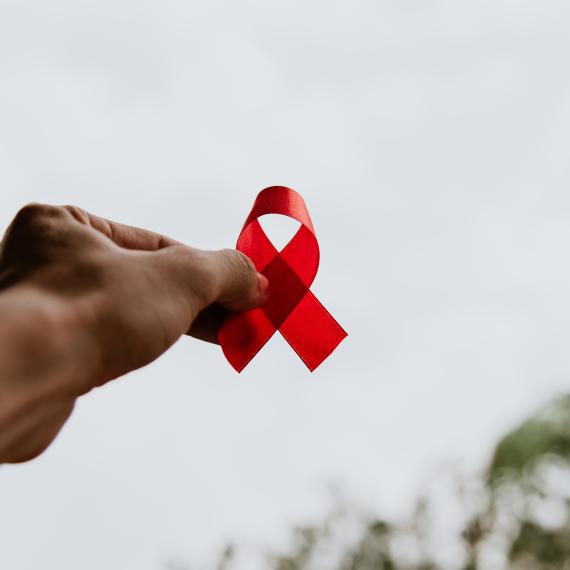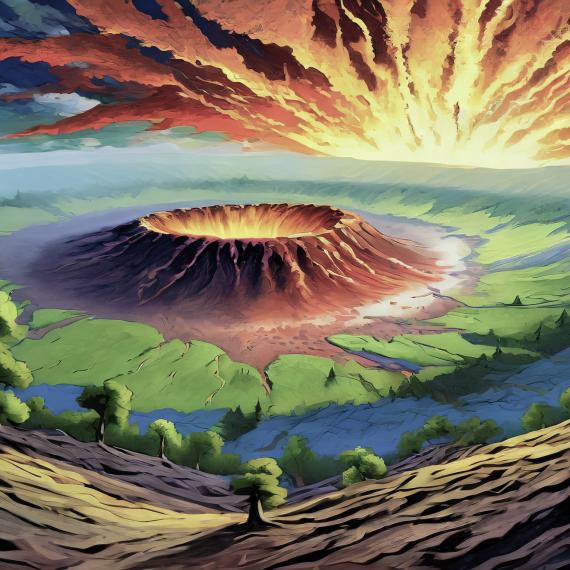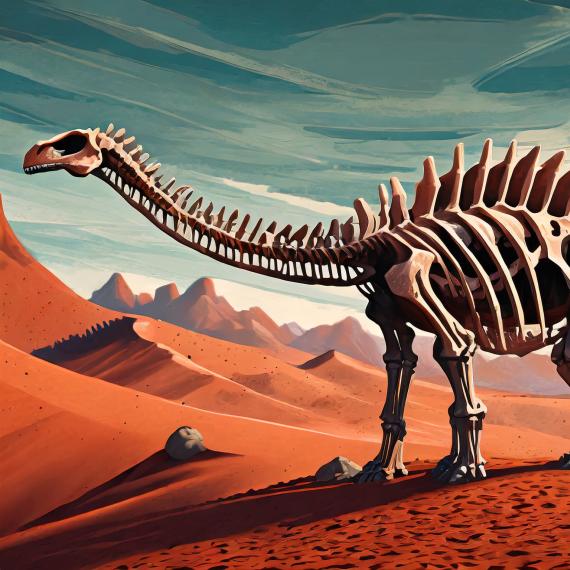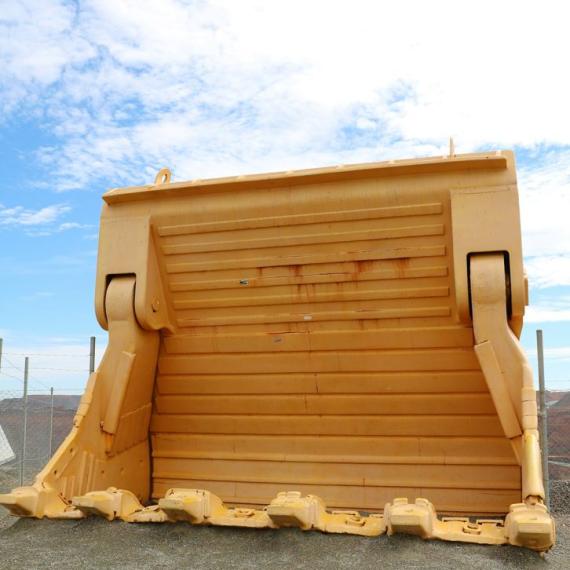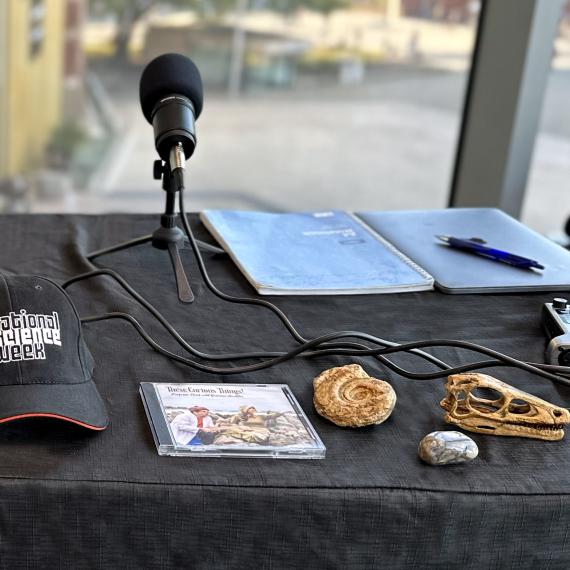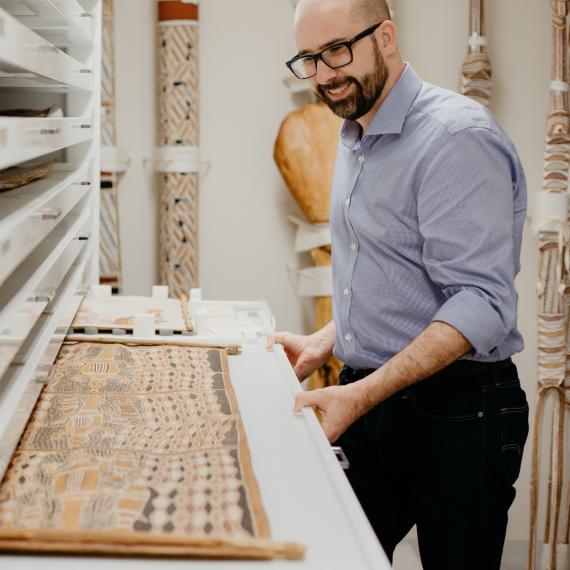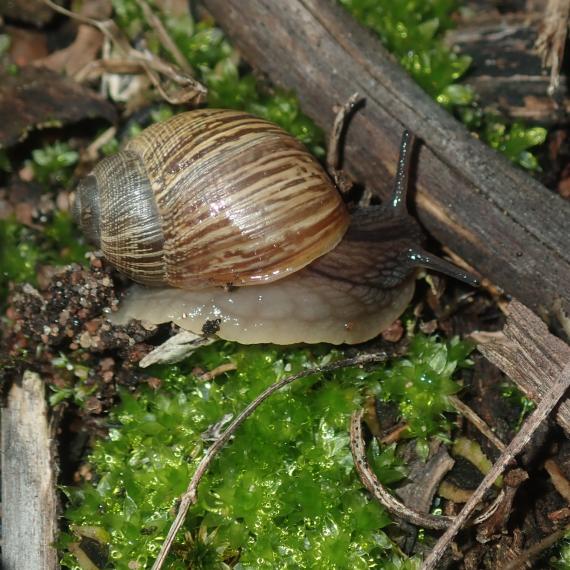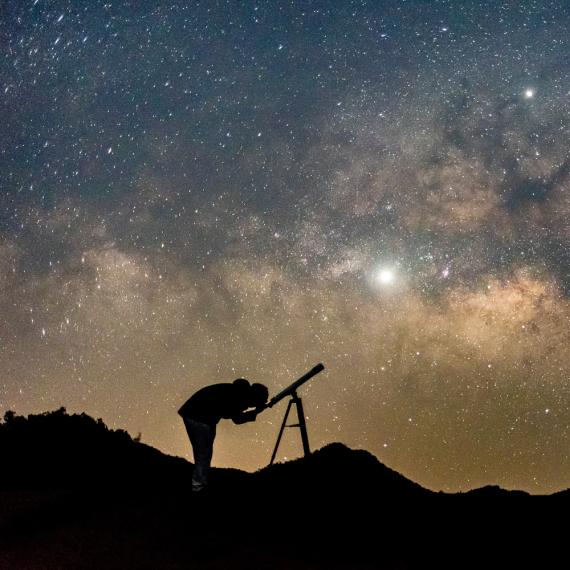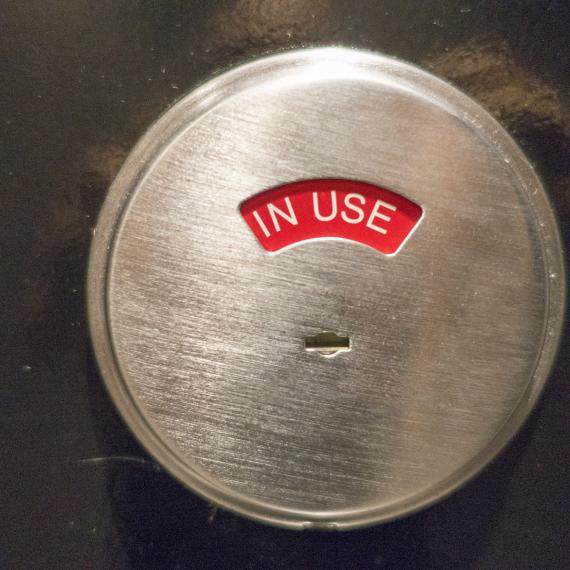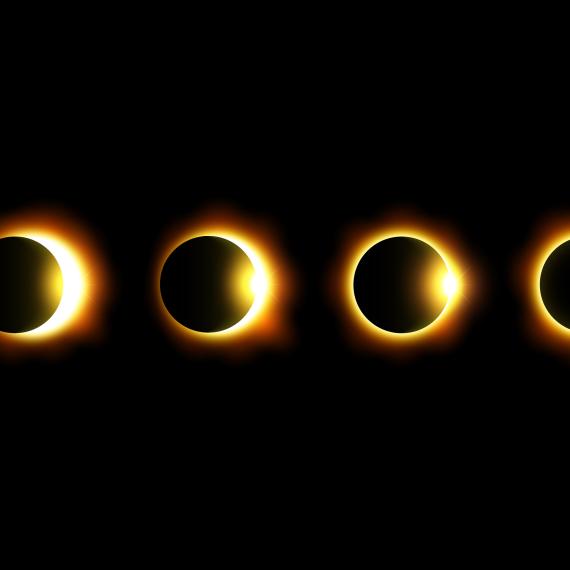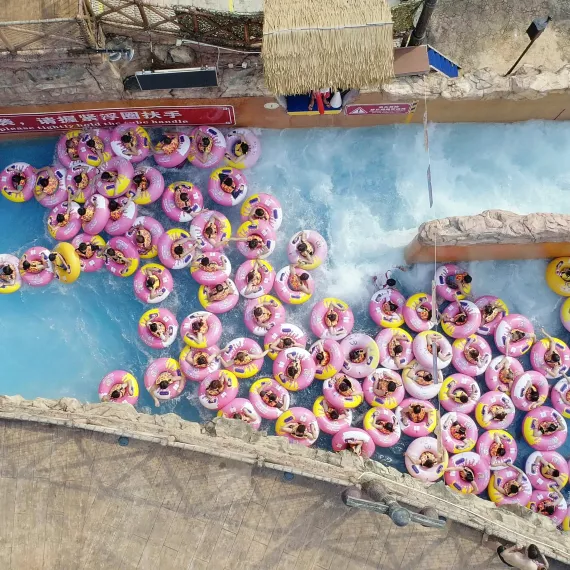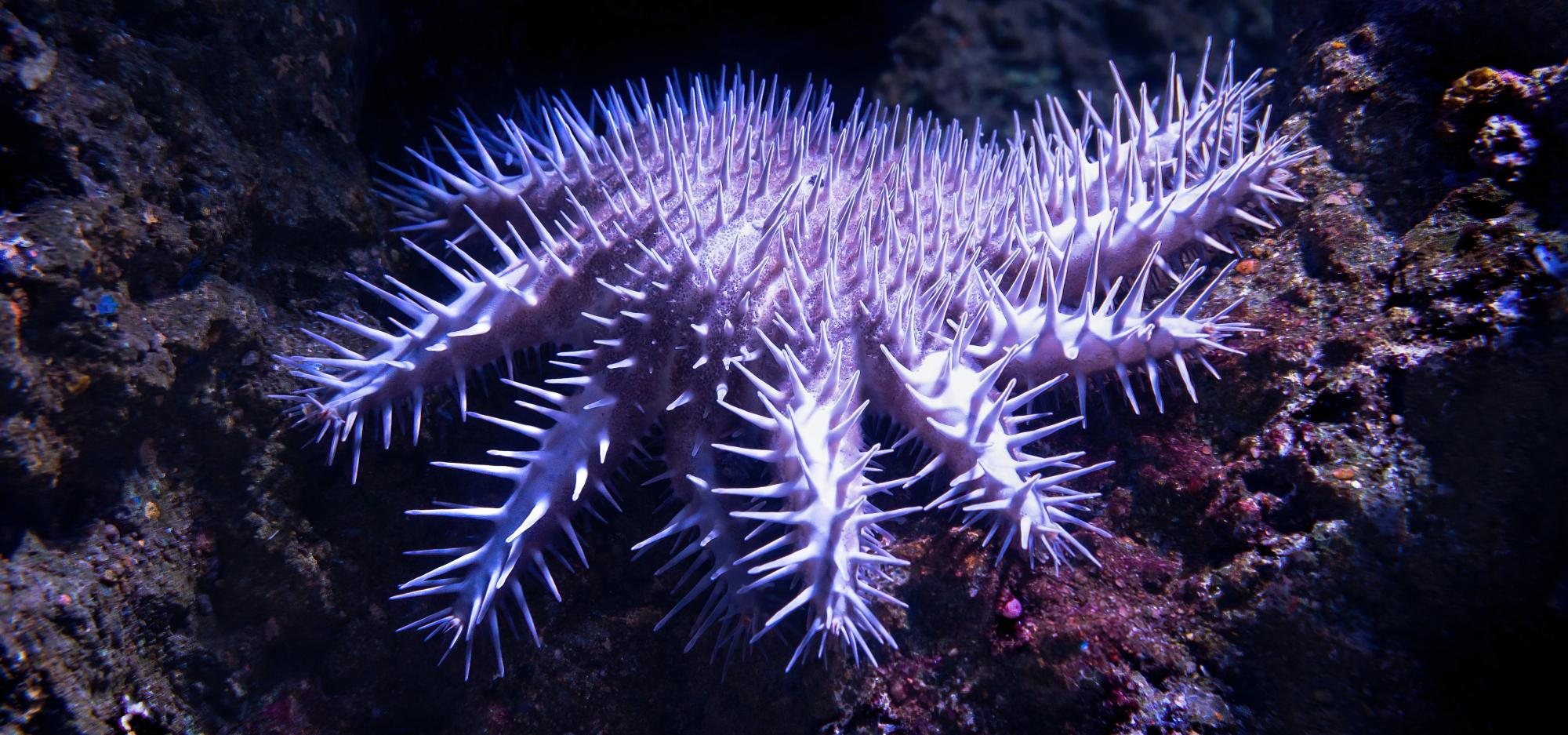
Conversations with Dr Chris Mah
Join world expert Dr Chris Mah from the Smithsonian Institution as he recounts his encounters with some of the most unusual creatures on the planet.
Venture into the depths of the sea and hear about the extraordinary adventures from our special guest visiting from the Smithsonian Institution, Dr Chris Mah. Learn more about his research into some of the most unusual creatures on the planet. From deep sea canyons to shallow waters from all over the world, you'll discover more about the real stars of the sea.
This session was facilitated by the Museum's own Marine Invertebrate Curator Associate, Professor Zoe Richards.
-
Episode transcript
Zoe Richards: Hello everybody. Good afternoon. Thank you so much for joining us here at Boola Bardip, the place of many stories on the beautiful Whadjuk Nyoongar Country. I'm Zoe Richards, the marine invertebrate curator at WA Museum, and we're about to go on a deep dive into the mind of the one and only Dr. Chris Mah, world renowned Asteroid expert. So, we're going to learn everything you never knew you wanted to know about sea stars. Let me now more formally introduce you to Chris, who's here from the Natural History Museum, otherwise known as the Smithsonian in Washington. So welcome, Chris.
Chris Mah: Thank you.
[audience applause]
Chris Mah: Well, thank you very much for your attendance. I'm flattered and honoured always to have an audience of interested people.
Zoe Richards: So, Chris is actually here on a visiting fellowship and that fellowship is made possible by the Foundation [for] the Museum's Minderoo Grant and which is funded by the Foundation's Discovery Endowment Fund. So, I'm curious to know—I actually don’t know—have you been to Australia before, Chris?
Chris Mah: I've actually been to Australia several times. I think my first trip was on the Sunshine Coast many years ago, and I've since, uh— Mostly my visits have been to Melbourne. I've worked with Tim O'Hara at Museum Victoria, and both of those have been extended visits, about a month or so long. So, I've already been digging deep into the diversity of sea stars here in Australia. Um, for the longest time, historically it was thought that Australia's sea star fauna was known, but scientists really haven't specialised in sea star diversity here extensively since the late ‘80s or ‘90s. So there is a sort of remarkable sort of lack of knowledge regarding sea stars in the deeps off of Australia. You know, when I'm talking deep, I tend to go 300, 500, 2000, 6000 metre depths. And, you know, there's a very different fauna there that occurs from the shallow water faunas. And then, intermediate depth in the deep sea is yet another distinct fauna. So, you often have different bands of species, of different kinds of animal species that occur in all of these areas. So, trying to keep all of this straight is a lot of what I do, is trying to identify and sort of place all of these into either certain nodes on the tree of life, our sort of system of keeping all of these straight and how they're interrelated, but also describing just new species.
Zoe Richards: So, Chris, can I ask, when did it all start for you with the sea stars? Like, when did you know that they're the taxa for you?
Chris Mah: Well, I must confess that I'm a bit of a nerd and a geek, I think, and so a lot of my afternoons were spent, well, my Saturday afternoons were often spent watching Godzilla movies and watching Kaiju films and things like that. And then this progressed as I got older into, you know, cartoons and anime and things like that. So, the unusual forms and shapes really appeal to me because sea stars and their kin, the Echinoderms, are really just the most bizarre things. Because they have no heads, you know. They, you know, they don't have traditional bilateral symmetry. They have really unusual solutions to evolutionary quandaries that all animals have to deal with, and so there are really interesting stories that come with them.
Zoe Richards: So, you know, clearly, you've been spending a lot of time, a lot of time in the lab looking at specimens with your— I've seen a little micro glass that you carry close to you. <laugh> He's always got this one around the neck. That's how we recognise him. But have you also been in the field? Have you been to Antarctica? Where have you been?
Chris Mah: Yeah, so, lately, as I've gotten further into my career, I do more museum work. Which is to say, I've been visiting more cities because museums are often the place where you have collections of sea stars. Things that are the result of fieldwork. Most people hear about expeditions and research trips and other kinds of ocean exploration. I've been on a few of those, but you know—and especially when I was younger—but the truth is that— And so just to sort of delve into that aspect of it—It's very exciting. I mean, like when I went to Antarctica I was one of the few people that could identify starfish on the deck of a ship, mean, which is to say, that's not a very common skill. And, you know, and they wanted me to train one of the students to do that for her dissertation, and so I, in exchange, I would get to go to Antarctica and collect things and bring them back for the Smithsonian. And I was like, Oh, that sounds great. What an adventure. I've never been to Antarctica before. And that's the reaction everyone and anyone would have, you know? And so, I was down there and a month later, I, you know, you're, after working, you know, long, 20- sometimes 24-hour days, just being exhausted after the seasickness, after having all sorts of crazy stuff happen to you, you know, when you're at sea. Including, you know, just personal interactions with your colleagues on the ship, getting hit by very cold water, being woken up by the ship, you know, moving in very turbulent seas, or being woken up by ice hitting the side of the ship— Or, you know, sometimes it's good things. Everybody's like, terribly excited because there's a huge aggregation of seals out off to the side and, you know, and— But after a while, you know— I mean, don't get me wrong, these are great experiences, but you just want to go back home and sleep in your dry bed. <laugh>[Audience laugh]
Zoe Richards: Chris, you’re bursting my bubble here. Stop this. <laughs>
[Audience laughter]
Chris Mah: Oh, I’m sorry. Yeah, yeah, I’m sorry.
Zoe Richards: Before, you talked about the tree of life. Let's just jump around that for a second and just put some context around sea stars. Like, where are they in the evolutionary tree?
Chris Mah: Oh, you mean—
Zoe Richards: Yeah, who are they related to?
Chris Mah: So, I should probably back up and say that. So, I work on sea stars, better colloquially known as star fish. And in within the domain of scientists, we refer to them as the class Asteroidea or simply Asteroids. Is there one term that is any more correct than the other? No. In fact, I tend to prefer calling them Asteroids. So, sea stars are part of a broader group known as the Echinoderms, the Echinodermata, which translates in Latin to spiny skin. So, this includes sea urchins and sea cucumbers and feather stars and a host of other fossil groups that are, you know— If you want to say, if you want to call something alien that lived on Earth, the Echinoderms in Paleozoic are it. But, um, sea stars are among the most, to me, the most interesting of the modern living Echinoderms.
Zoe Richards: So, you've alluded to diversity already a few times. Just how diverse are we talking, are the sea stars?
Chris Mah: So, sea stars currently... I think the on-paper number is 1900 species. And I'm pushing, I think— I've already contributed 196... so, something in the neighbourhood of 1970 and by the time I'm done getting some of the papers that I'm supposed to get done—not just the papers that I— Oh, Zoe. But there was a paper—
Zoe Richards: We have that on record. [Audience laughter]
Chris Mah: There was a paper I was writing that didn't get sent out because of the trip stuff. Let's put it that way. And that paper is another like— There were about 10 or 15 species in that paper from the abyss of Antarctica. So, you know, that goes up another notch on the overall scheme. So, I envision hitting, you know, closer to 2000, in which case that puts us closer to the brittle stars, which are the most diverse of the Echinoderms. But then, of course, brittle stars are so abundant that their numbers are going up, probably, by the second. You know, I mean, my colleague Tim O’Hara has told me that the diversity of brittle stars is astonishingly high, and it hasn't— The number of people to work on them is always well beyond, well behind the number that they expect to find. And that's the case for almost all animal groups, you know, is that there are fewer people to work on them than we would like because, just for whatever reason, there just aren't enough people who can go, you know, to identify species, to identify the number of unidentified species or even the known species of a particular group. Most marine animals are extremely diverse, and it's... There's a disproportionate number of experts to work on them.
Zoe Richards: Yeah. So, I actually put together a talk at one point a year or so ago about the status of marine invertebrate taxonomy in Australia and canvassed a variety of colleagues, including Tim, who you've just referred to, and everybody seemed to think that only about one third of Australian marine invertebrates had actually been described and that there were many more on shelves in museums, and then many more again that had never even been discovered. Do you think one third would be a fair ballpark statement to describe the sea star diversity in Australia and beyond as well?
Chris Mah: So, so, wait—
Zoe Richards: One third of them have been described; so there could be two thirds still out there waiting for names and waiting for discovery?
Chris Mah: Yes. So just, again, I don't know what everybody's background is, but taxonomy is the field of science that names and accounts for the species within biology. There's a whole sort of thing to it, you know. But that's— The part of that thing, accounting for all the number of species and diverse taxonomy is part of the diversity, understanding diversity. So, with that in mind, we still know a minority of the species that are present in Australia. And I'd say a third is as good a number as any. But, for example, just over the last month that I've been at the Western Australian Museum, I have discovered about 30 or so, 30 or 40 new species. About 8 of them, 9 of them from come from recent scientific expeditions from like the Ashmore. I mean, I just I keep on finding new things. I wrote a paper a few years ago on Indian Ocean species from the coast off of, the east coast of Africa, near Madagascar and whatnot, from the Paris collections. And I described some, I described almost 20 species just in one sitting, a month of working in their collections and looking at that new species collected from, you know, from just the deep waters off of those islands. Lots!
Zoe Richards: Well, let's talk about their habitats. You've mentioned their habitats. You know, when I've encountered sea stars, it's usually in the shallow tropical locations. But from what I'm reading, there's actually much greater diversity in the deep ocean. And they’re, you know, inhabiting all corners of the ocean. Is that right? Tell us a bit more about it.
Chris Mah: So, that's right. So, again, for people who are perhaps not as familiar, Echinoderms are ocean only. If someone described a sea star or a sea cucumber from a purely freshwater habitat, please call me and we will write that nature paper together [Audience laughter] because that's how important that would be. Or, you know, like if there was a star fish that lived in a tree, a real tree, like a proper tree in the desert, call me, you know. <laugh>[Audience laughter] But the truth is that the Echinoderms live in oceans, and that's where they— That's the only place they're found. But, that said, they've been living in oceans since the Paleozoic and so, you know, they've diversified throughout all the habitats and settings in the world's oceans. There are sea stars in the Arctic, the Antarctic, Atlantic, Pacific Ocean, Indian.. And we've only just discovered that, for example, there are Echinoderms that even live at hydrothermal vents, which, you know, you would think would be alien to Echinoderms because they have such toxic metals living on them, so— I'm sorry, because the hydrothermal vents have toxic metals as part of their habitat, but Echinoderms terms tend to be very sensitive to water quality. And so that's why actually freshwater tends to kill Echinoderms because it throws off their isotonic balances and such. It's a, well, we'll get to that because I know that's another question. [Audience laughter] But the metals, the poisons in the hydrothermal vents, can affect how sea stars and other Echinoderms behave and how they can settle and occur. But they occur everywhere and at every depth from intertidal to— I've seen Echinoderms on Oceanus go down to 6000 metres. You know, it’s extremely cold. There’s a lot of pressure. There’s a lot of environmental adversity those animals have all adapted to. It’s their home, but for us it’s an extremely alien, an extremely, you know, like— How can anything live down there? And, having seen the bottoms from video, it even makes me wonder when I see living things down there. How do those things live? Do they— They barely, they barely must live, ‘cause some of those things, like sponges, are literally just glass and a little bit of tissue. And sea stars are the same thing. I mean, sometimes they’re just bone and some skin. Like, how does that live down there?
Zoe Richard: Yeah, you know, so that kind of leads me to what I was going to say next. It's incredible that they're living in all these different parts of the ocean because Chris gave us a master class at the Museum the other day about sea star taxonomy, and he curiously referred to sea stars as boxes. So, the fact that they’ve <laugh> become so diverse and, you know, living all throughout the oceans is pretty incredible given they're just a box, right? You want to explain what you meant by that?
Chris Mah: So, <laugh> this kind of alludes to that earlier statement I made about why I think sea stars are so interesting. So, sea stars and many Echinoderms are made of small, little plates. And those little plates are arranged into essentially a three-dimensional lattice that is inter-, that is fused together with tissue. So,it's not just, you know, a shell or a skeleton, it's actually kind of a living box. And these, the different parts of the animal are arranged in different formations. They're star shaped, they're brittle star shaped, they’re— If you look at sea urchins, sea urchins are essentially round globes of these plates arranged into spheres, and they develop in different ways and etcetera, etcetera. So, the thing about sea stars is they have a particularly consistent body plan, which is to say its star shaped with 5 to, sometimes, up to 50 rays. They have adaptations that are part of their overall skeleton that help them to match the habitats they live in. There's one group, the Paxillosida, which are called mud stars, and, you know, there are tube feet that are pointed for digging into sediment. They have spines that are flat which help them dig through the sediment. They, you know, they have— Sometimes they have what's called paxilla. There are plates that act almost as trees that protect all of the papula, their, sorry, their gills on the surface of their body from being smothered by mud. You know, there are any number of things that look like interesting adaptations. And then the question is, well, why— What are those used for? What are they? What do they do? Sometimes they're more obvious, but sometimes they're not. And sometimes that's like, the whole interesting part of the question that brings me into studying these animals. You know, I mean, you know, there's animals that, you know, I've mentioned and we'll probably talk about this, but there are slime stars that produce mucus as a defence. You know, I'm sorry, what? At what point did an animal need to, you know, drop slime on something to protect itself? I mean, it's a fascinating question. I mean, at least to me. It keeps me up at night. I was just thinking about it the other day. <laugh>
Zoe Richards: So, yeah, like you say, they’re fancy boxes, basically, you’re saying.
Chris Mah: Yeah.
Zoe Richards: Very fancy boxes and, um, no heart, no blood pumping around. So, you mentioned the cilia. That’s how they’re staying oxygenated, is it, cilia?
Chris Mah: Well, so... The boxes are, again, just part of the skeleton and you know, the very fact that they're actually able to flex and shape. The weird thing about them is that all of the spines and everything that you see, those are covered with epidermis. So, there's actually skin covering over all of that. And on top of that, the skin itself, so, there are projections through the skin called papula, which are gills, and those are how they can absorb oxygen from the surrounding water. This is all facilitated by the fact that the epidermis has little, little hair-like things called cilia, and they're always beating. And so these cilia are actually very important to things like what's called counter current exchange. This is how all the gills work. The currents outside flow one way and the currents inside their body flow another way. And the currents beat in such a way that it facilitates gas exchange through the, through the body surface. So, you know, this is, incidentally, if you want a take-away— When I talk about epidermis—this might not be something that's obvious to people—but if you ever get like a starfish, like a dried starfish or a dead starfish, you notice if you take a deep, hard whiff of it, it's got that kind of odour of the sea to it.
Zoe Richards: By the way, I'm just going to add in. Chris is the only person I've ever had in the lab that like, can open a jar of ethanol-preserved sample and be like, mmm, I love that smell.
Chris Mah: Oh, I mean, some of that stuff is really delicious. [Audience laughter]
Zoe Richards: <laugh> Believe me, it’s not. It’s not.
Chris Mah: I mean, it's sweet, sweet-smelling, but I haven’t-- It would be improper to have actually tasted any of that, obviously. [Audience laughter] But I mean, there's some of the, some of the alcohol stores are just those very, like, fragrant— Really lovely stuff. [Audience laughter]
Zoe Richards: Alright. So, thinking back on this water vascular system, right. Seems pretty obvious to me that these stars need to stay in the water. So, if you took them out of the water, how long could they live?
Chris Mah: Okay, so the water vascular system is the circulatory system for not only sea stars, but most Echinoderms. The water vascular system works primarily through a bunch of tubes and other kinds of channels that run through the sea star’s body. The water vascular system is also present in all other Echinoderms – brittle stars, sea urchins, and so forth. But sea stars, you'll particularly notice that, one particularly notices that because these bring water in from the surrounding area, and so, sea stars are extremely sensitive to their habitat as a result of being essentially inundated with sea water. It's how their tube feet work, you know. So, when you see things, you know, essentially all of the sea star tube feet extending and so forth— But also how the thickness of the body maintains itself is, because you've got sea water holding it up, the water pressure holding up the actual body itself. And then the water continues to function to hold up the papula, the gills, among other things. And so, if you ever dry out a sea star and you do it the bad way, you'll notice that the entire coelom collapses. And I mean, so— I'm sorry, the coelom is the central cavity of the animal. But that means that the actual like, central part of the body of a sea star without water will just collapse. And so, when Zoe asks, well, what do you get when you have like a Linckia or some other sea star that's kept out of water for a while— You know, some sea stars can actually survive outside of water for a short period sometimes. By short period, I mean, sometimes even a day or so, because they're adapted to living in harsher habitats. Linckia is the tropical example, perhaps, but the best examples are found on— Well, on the west coast of the United States you have things like ochre stars, Pisaster ochraceus. Here in this hemisphere, you have things like, in New Zealand, Stichaster australis or Uniophora which is a granular star which occurs— So you'll notice that all of those sea stars have really thick skeletons and those thick skeletons are adaptations for them to survive being left out of water for extended periods of time, because they'll pull back all of the paupla, all the gills, and they'll seal up everything. And in fact, you'll notice that a lot of times intertidal sea stars will cluster together. They'll just kind of aggregate in really tight knit groups, and even that is behaviour which helps them retain water. And so, the skeleton itself can be an adaptation to retaining water because they'll just close it up and prevent water from seeping out. They lock up all of the gills and soft parts to avoid being decimated by predators, and then they can physically cluster together to further help retain water. And so you tend to notice, for example, with deep sea animals or with animals that are more accustomed to living, you know, freely on the sea bottom, they're not great when you bring them up on the deck because they're you know, they're not as, they're almost never brought up to dry, non, you know, water-filled habitats. So, I mean, I got a question once, an email about this thing. And you know, now, some people at aquariums claim that sea stars, you know— Is it true they die instantly if you bring them up out of the water? And I was like, well, I mean, it depends, but usually not instantly, you know. But there are some sea stars I know that— I've heard stories that, you know, there were some— There have been stories of sea stars that could live literally weeks just in shallow water pools that evaporate, if there is like fog or some kind of watery mist nearby. You know, because they're, well— Basically, there is a story of somebody I know who put, who was trying to dry or, you know, prepare a sea star and they left it, essentially, on the roof of their house. But the thing is that, they lived near the ocean and it was really warm. It was really foggy and, you know, there's a lot of sea water in the air, etcetera, etcetera. And, you know, and they, it actually didn't—and this is going to sound bad—but it didn't die for a long time. [Audience laughter]
Zoe Richards: I won’t feel so bad when I leave them in the bucket for too long after collecting them, then. So, what about eyes? There seems like there's been a bit of new developments around sea star primitive eyes, is that right?
Chris Mah: Right. So, sea stars are capable of seeing in ways that are not obvious. So, like, the first thing is just photosensitivity. A lot of sea stars are able to just detect light. You know, they have light sensors on the surface of their body, but they also have a terminal tube foot that has a photosensitive tip. And for the longest time, people assumed that because they assume that sea stars, Echinoderms, were primitive, that it was really just like, again, a light sensing organ. It has become clear, however, in the last five years or ten years’ worth of research that there are actually sea stars that have eyes. I mean, they have image forming eyes. And from what I understand— Like for example, I'm sure everybody wants to know more about the Crown of Thorns, but the Crown of Thorns and the Blue Linckias, apparently they have a visual— Some of the structures on these eye tips are called omma... Not onomatopoeia. Ommapidia?[sic] [Ommatidia] Oh, I’m forgetting the name, but they essentially— I have a paper on my laptop that I have to get back to, the author of this paper, because we're writing something. But even deep sea sea stars apparently have well-developed ocular cell structures. And so, you know, and so the question— Like, so, the initial paper was really interesting because it was like, well, we never really thought about why a shallow water sea star would need to see, physically see, even under a, you know, in a very coarse way, like a rough image of, you know, like a coral head or wherever it was going. But why does a deep sea sea star need to see? I mean, was it looking at the bioluminescence? Is it looking for other individuals that are bioluminescent? So, for those of you that are in the deep sea, you know, it's dark down there. There's no sunlight. So, all of these, there's all these animals that are flashing lights. They're bioluminescent. They produce little bips and bops of light that we don't necessarily see, because when we go there, we have to turn a bright-ass light on everything. And, you know, so there's nothing there that's evident. But so, you know, so, you know, I'm still basically hammering this question out with my colleague because it makes no sense. And, you know, let's keep in mind that sea stars have been around since before dinosaurs. I mean, proper sea stars have been around since the late Paleozoic, early Mesozoic. So, you know, they're not new things. They're, you know— People want to say something like living fossil. Well, you know, everything's a living fossil in that sense. But sea stars have like, as a group, the modern incarnation, the forms, have been around for, you know, hundreds of millions of years. So, you know, and they continue to persist and they're important, and [indecipherable].
Zoe Richards: And there's another feature I learned from Chris the other day in the master class called pedicellaria, [Chris laughs] which we don't know a lot about. Is that right? That's an unusual little feature.
Chris Mah: So, speaking of mystery. So, there are several groups of sea stars and in fact, even sea urchins, that have these accessory structures that are called pedicellaria. Some pedicellaria are complicated kind of three-part claw-shaped structures. And in Antarctica, on some of the sea stars that capture krill, for example, they can be used to capture swimming prey. So, imagine if you will, a sea star that is about this big and has 50 rays that it holds up into the water. And each one of those rays have small bitey claws. Those are, those can be pedicellaria. And, you know, and you can literally see them with your eye. But they, you know, they bite. They bite, essentially. They don't actually eat anything. They just grab things. But you can see little krill and crustaceans fly into them, and they just grab onto them. And, you know, and if these things were like the size of a dog, we'd be terrified of them. But I mean, there are lots of sea stars that actually do that. And, you know, we don't exactly— I mean, in some cases they seem to be defensive. In some cases they seem to assist in predation. One of the deep sea things, one of the deep sea groups I work on, the Brisingids have taken that to an all-new level where all of the spines that line the arm have sort of a sock covering each spine and each one of those socks is inundated with these little pedicellaria. And they use those spines to capture small crustaceans as they swim by. So, you know, a bunch of amphipods or crustaceans, or whatever, they bounce into one of the spines, all the pedicellaria grab them, and then they get moved down to the mouth, kicking and screaming, where they're devoured by the animal. And I once coined the term death velcro on Twitter. And that seems to be— It sticks. [Audience laughter] But it seems to me like the best way to describe them as any. But there are other sea stars, for example, things that eat corals that have big— There's one sea star that I described called Hippasteria muscipula. Muscipula is the word for Venus flytrap, and so it has these pedicellaria that are flush with the body surface and they also have these big claws, but they feed with the stomach so they don't move those sides to the, where the coral are. So, I don't know why they have these big bitey jaw things just on the surface of their body. They seem to go back and forth while they're feeding, so maybe they protect the animal from predators. It's unclear to me. But, you know, that's one of these mysteries. You know, every time I see pedicellaria, I think they’re some kind of defence. Bu, you know, I mean, we were talking about the box earlier. Well, you know, they're bitey boxes. You know, a lot of them are able to defend, presumably, they're able to defend themselves or use them to feed on things. But, like, it's not something that gets a lot of attention. And, you know, rarely, you get a nice study that captures the whole, like, thing. But other times, we still just don't know, you know, and so there are mysteries. I, those are the kinds of things that I, I relish, you know. They're mysteries. So why— You know like, if it was on a on a worm or something with a face with eyes and what and, you know, bilateral symmetry, I mean, maybe it'd be more clear. But they're not. And, you know, because they're just big disks walking around with teeth. [Zoe laughs] I mean, you know.
Zoe Richards: So, they’re catching krill, Chris. They’re catching krill. They're feeding on coral. They’re obviously accomplished hunters. What other stuff would they eat, sea stars? What else is prey to a sea star?
Chris Mah: Well, sea stars eat— They're what I would— Sea stars are, generally speaking, opportunistic. They, you know, as I mentioned when I started with— They're predators on, a lot of them, are predators on molluscs. But that's an, that’s over-specified. A lot of sea stars essentially feed on anything that's slower than them. So, molluscs. I mean, that was literally saying to some of my colleagues that one of the best ways to get molluscs is to cut open Astropectinids, another sea star that just eats a whole bunch of small snails. And, you know, because the shells are all still in there, because they don't, they don't have an anus. So, they just kind of, you know, just sort of build up until it's time to let them go. But I mean, there's a lot of animals that like—One of the things we're discovering right now that's really important is that sea stars in the deeps, like 3000 to 5000 meters, there are deep sea corallivores. There are certain genera that will climb on— Well, the sea stars will climb up on the corals, and some of these corals are six feet, which is what, two meters here?
Zoe Richards: Yep.
Chris Mah: Two meters tall. And they'll climb up to the top of those things and they'll just eat their, up or down. And, you know, and these are not fast eating things. There was once a video that was taken years ago where there were sea stars feeding on a bubble-gum coral that had fallen. And, you know, there were three star fish in a very particular location, you know, feeding on different aspects of it. And so. the sub moved on and they came back to that site a year later and they came upon that same coral and they discovered that not only was that coral still there, but those sea stars were still there in the same spot. I mean, it's possible it was a coincidence that they saw, you know, three separate sea stars that had just moved on to similar locations. But just based on seeing the image and from what people who saw it tell me, you know— I mean, the video imagery, it looked like those were the same exact things. So, you know, the same three individuals that were feeding on it. So, when I think about, you know— And that was a, that's a solid year, you know. And so, when you think sometimes about how some of these coral-eating sea stars in the deeps, you know, could be on some of those corals for weeks to months, you know... I mean, some of those things must have, I mean, the metabolism involved must be much, much slower than, you know, what we think about with regard to predatory animals or just animals in general. I mean, the ecosystem takes place in an entirely different timescale than us. You know, there's a whole suite of behaviour that was documented on the west, on the west coast of North America, where it was discovered that sea stars actually thumb wrestle. When sea stars move past one another, they will assert dominance and they'll— I know this sounds ridiculous, but it's true. But they will push their arm tips up against one another and one of them will thumb wrestle the other one down and that one wins. And they actually take on a whole behavioural dynamic akin to African mammals when feeding on— Like if they find a dead carcass of a fish or, in fact it could be a sponge or it could be a seal, and the bigger sea star will try to get on top and it'll push the other ones down with its thumb, you know. But the thing is, you don't see any of this unless you record it in time lapse and you see it all accelerated. You know, several days’ worth of activity is something, you know— We would only see it, we would see it happen in the course of maybe, you know, 5 seconds but it takes place over, you know, days to weeks. So, there's a whole separate dimension involved with them as well now. Sorry.
Zoe Richards: Yeah. Yeah. That's fascinating. Thumb wrestling. [We’ll] try that one, daughter, over there. We’ll try the thrumb wrestle later. <laugh> So cannibalism is pretty common in the marine environment. What about the sea stars? Are they family friendly or are they—?
Chris Mah: I mean, in the strict sense, cannibalism is the species, a species that feeds on its own species but you know— And actually that's true for sea stars because there's one sea star that’s a ravenous predator. It's called Solaster. And there's one species called Solaster dawsoni which feeds on other, you know, if it finds another Solaster dawsoni it'll eat another one. But it feeds, it preferentially feeds, on another species of Solaster. And then they are also known to feed on brittle stars and sea cucumbers and etcetera, etcetera. So, sea stars eat other sea stars all the time. Sometimes, you know, just swallowing them. A lot of times it's not to their advantage. Some sea stars during the wasting disease episode that happened up in the west coast of North America and Canada, it's thought that some of these Solaster sea stars, which are voracious predators of other sea stars, devoured sea stars that had already been sick and that might have contributed to how so many of them themselves became infected. So, there's a lot of stuff going on there. But sea stars eat almost— They’re predators on almost everything. So, you know, scavenging but also just, you know, other animals themselves. And they often elicit very acute escape responses. You can take a small Solaster sea star and put it on one of these big, like, multi-arm sunflower stars. There, in the west Pacific Northwest, we have these big sunflower stars that are 30-ray monsters. You know, they were eradicated by the sea star wasting syndrome and their loss literally created all of the urchin barrens that are present up there. But you can take one of these little sea stars and touch it to the arm of an animal that is 20 times its size, and it will elicit an escape response of the larger animal just almost immediately because they can smell and are terrified of the fact that, you know, that it can be devoured by this species. That, you know, that it's, you know, it's built into its genetics, I suppose, that it's accustomed to knowing what to be afraid of. So, I mean, put euphemistically.
Zoe Richards: So when they're eating, you know, we hear about them everting their stomach. Do you want to just explain about that process a little bit? Because that’s all quite horrifying, especially if you're a coral.
Chris Mah: It's, I mean, it's, well— So, sea stars have two stomachs, one a pyloric stomach, which is sort of further up in the disk, and then what's called a cardiac stomach, which is what everts. And this is, you know, again, a story familiar to most people. They can evert onto a prey item that they desire and they can devour things outside their body. For mussels and clams they literally only require, I think, something in the neighbourhood of a millimetre or half a millimetre wide of a crack, and they can just slip in there and devour the meat of the animal inside. Um, and you know, and this is the case for a lot, for most sea stars, coral, whether they are feeding on corals or whatever animal. But when you get into, for example, down stars that actually lack a cardiac stomach, they will just like sort of hump down over things and swallow them whole. They just devour them by kind of dropping their mouth on something and then using a lot of the spines to kind of paddle food up into it. But, you know, sea stars have, as with many other [Echinoderms], kind of what's called catch connective tissue. And they can, they have like a kind of a flexible connective tissue that allows a lot of the skeleton to kind of flex wider or broad, more broadly than what you would think they would be capable of. And so oftentimes you'll see like— There's one, for example, really telling picture of a giant sea star from the Galapagos, and it’s fed on a sand dollar. You know, the disk of this animal was this big and the sand dollar was this big. And so the sea star just literally swallowed it up and just kind of got stuck there and was probably feeding on it until, you know, such a time when it was done and it probably just spit it out. They can— Sea stars are really weird because sometimes if they get something ungainly in their disk, I mean, they'll sort of just deal with it for as long as they can. But when they're done, they can sometimes just create either a larger oral opening or they can literally just open like, little, like, cracks or openings on their disk to let stuff out. You know, there's a deep water mud star that lives in New Zealand called Prosupenasta[?], and they would often feed on quill worms or different kinds of polychaetes, which have these really inflexible tubes, and when it was done feeding on them, you know, it would literally just kind of, like, propel them through its body surface. Just, <thunk>. Not— ‘Cause they don't have an anus, you know, so, there's no— They don't send them out through the mouth. They're just, like, ugh, too lazy. Just, you know, throw it out through the stomach or the back or whatever. You know, just, <thrrrrpt>. And you know, and I mean, there's pictures of this. You know, there's pictures of these sea stars. They just, they just open up like, the body wall and they just throw like, these tubes out, the inedible like, tubes out. So, yeah, you know. Watch a shark, let a shark do that. Yeah.
Zoe Richards: <laugh> So now, arms. You've said some have 5, some have up to 50. Like, why? That's pretty excessive. Why would you have 50 arms?
Chris Mah: You know, it's not clear. I mean, multiple rays are, and sea stars are associated primarily with predation. They, you know, if you see a sea star with more than 5 rays, it tends to be associated with them being able to feed on something more effectively, like Brisingid sea stars, a deep water group, the death Velcro ones. They have multiple arms because they hold all their— They’re suspension feeders, they're filter feeders, and so the more arms, the better to eat you with. And I think the same thing is the case with these 50-rayed Antarctic sea stars, is they hold their arms up into the water in order to capture more krill or prey or what have you. But even the local, you know, like Coscinasterias, these are predators of shellfish and so they tend to devour these more effectively with multiple rays. So, there's a lot of, I mean— But as to how, I mean— They start with 5 rays and then they add rays afterward. So, you know, but as to how that developed, I think people are always trying to look for why. It does it happen in multiple different lineages of sea stars, though. There's not one group that has only multiple rays. You know, you can look across really widely divergent, different types of sea stars and they can have up to, sometimes, 10 or 15 rays, depending, you know— And again, associated with predation. So, I think it probably, you know, the association, the adaptation is effectiveness on feeding. But the actual developmental mechanism is poorly understood.
Zoe Richards: Okay. So you've got all these rays, as you call them. You're bound to lose a few out there in the wild ocean. <laugh>
Chris Mah: Sure.
Zoe Richards: We hear a lot about regeneration potential in sea stars. Can all sea stars do it, and what is the mechanism behind that? Is it anything to do with stem cells or...?
Chris Mah: Sure. So, regeneration is also one of the hallmark powers of Echinoderms, with sea stars in particular. And, you know, there's different kinds. Most sea stars, for example, can regrow, like, an arm tip or an arm. Some sea stars can regrow, you know— If you take off an arm or two from the disc, it'll regrow an arm. In remarkable cases, you have sea stars that can regrow an entire, like— You can take an animal and cut it in half and it becomes two animals. I mean, that's not the case in every instance because sometimes you cut a sea star in half down the disk and all you have is two halves of a dead sea star. But, you know, you take the even more extreme case in certain Ophidiasterids, like, what is called a so-called comet form, and you can take the arm off of a certain sea star and the arm regrows an entire body. Or like, some of you have aquaria and you have these little Akeelah and Astrocyte or sea stars, those are all [viviparous.] I'm not even sure if they have sex. They just divide, you know. And in fact, that can be a problem for you if you have some of these little Asteroids and sea stars that live in your aquarium because if you, if those animals are well fed and are a little too happy, they will smother your aquarium. And I've seen that, because we have them in our aquarium, we have them in an aquarium back in [Washington] DC on display. And there was one day I looked down— I was working, I was helping one of the technicians. I looked down and the bottom is smothered with them. I mean, just hundreds of them. Little tiny, these little like, asexual or [viviparous] sea stars. So, you know, there's the— There are different ways that sea stars can do that. So, you know, but to regenerate, generally speaking the process involves de-differentiation of the cells to a point where, you know, it regrows. So, yeah. I mean, in that sense it is a stem cell thing. Um, but it involves a lot of different dynamics and every group tends to vary somewhat. But the physio-chemistry of it is— I remember trying to write a blog about that once and, and writing the generalities, all that stuff I just told you, that's easy. That's kind of fun, you know. You kind of know which taxa can do that. But when you get into the actual like, you know, de-differentiation of the cells and the cell age morph stuff, that's a little bit, a bit out of my comfort range as far as understanding. But it's probably really interesting, you know, especially if you're inclined to regrow your head off of your arm or something.
Zoe Richards: <laugh> So you can see there's heaps of terminology around sea stars, as there are with every single taxa and a taxonomist expert like this speaking about it. So, I've been learning a lot of new terms and one of them is pseudocopulation. Doesn't sound like much fun from where I'm sitting, but can you explain what that is?
Chris Mah: Sure. <laugh> So, just to take us back to sort of equal footing. So, sea stars don't have sex at all. They are broadcast spawners. So, the males and the females, you know—if even that, because there are hermaphrodites also—but they produce eggs and sperm and eject them into the water and through various, what's thought to be pheromonal or other, frankly, you know—not random, but just other processes—the gametes meet in the water column and fertilise. A number of sea star species have developed means of making the chances of those gametes meet, you know, to be better. The chances, they have increased the chances of fertilisation by basically being closer to one another. Some sea stars will actually get together in clusters and they'll just all spawn simultaneously. So, the sea star that you have in a lot of the local waters called Archaster, the one locally is called Archaster angulatus. But if you go into like the Philippines or farther into the Pacific, there's another species called Archaster typicus, which is very similar. But both of them practice what's called pseudocopulation. And that's where one sea star rolls over the other one, and that kind of facilitates spawning because they're both spawning, they're both, you know, expressing gametes as a big cloud, but they're on top of each other. So they, they, you know, they're all there at the same time, you know, but nothing's inserted, you know, so it’s not dirty. But you know, but it is, it is thought to facilitate a greater success rate of fertilisation. And, you know, and it's not just tropical species that does that. There's like, there are sea urchins that kind of do something like that. Mostly it's just moving into close proximity to facilitate fertilisation of the gametes. But there are some sea cucumbers and brittle stars, there's photos of brittle stars that I've seen, that will literally move over one another and kind of perfectly align their arms and, you know, and then let it go, you know, [Audience laughter] and, you know, and you're just like, wow, okay. There's one sea star called Luidia maculata which is this really big sand star. It's literally like, this wide across. And, you know, and there's pictures of this thing like, just rearing up on its tippy toes to spawn. I mean, can you imagine, I mean, just imagining this like a sea star that is like almost— No, I'm sorry, I was going to say two feet, but short of a metre across, just all of a sudden just kind of getting up on its tippy toes, it kind of looks like it's walking, and then just exploding with gametes, you know, eggs or sperm into the water.
Zoe Richards: I was doing a little bit of media searching in preparation for this. And I've been to Japan. So have you. And we know that Japanese people like to eat a diversity of marine life. I found a website. They we're talking about eating sea stars, and I've got a couple of quotes here. One person was saying, I ate gonad, it tasted bitter. Somebody else was like, I ate it with ginger and wine, mmm, gourmet. And another person was commenting that there was no weird pain. So what's going on? I haven't got sea star on the menu at home. Should I be, Chris?
Chris Mah: Ah, no. [Audience laughter] So, there are several instances of people— It's funny because I said this once, there are several instances of people eating sea stars and everybody was like, Oh my God, so they're coming after us now. Sorry. No, but so there are there are several instances of, you know, different cultures devouring sea stars. It's not frequently the case. And in fact, you know, it isn't something that I think I could even recommend from a culinary perspective. But I've also been to Japan a couple of times, and like, I haven't had sea star per se, but there's a lot of marine invertebrate stuff that is basically just bitter, and it's not terribly palatable. But so, the instance that— What she's talking about is from a story in, I forget exactly where, but they're feeding on a sea star called Asterias amurensis, which is an Asteroid sea star that is yellow and purple and occurs, I think it's more in the temperate region near Hokkaido. And what they're talking about is feeding on it in a way similar to sea urchins. And they cut them open and they pull the eggs or the gametes out. And, you know, and so in a regional sense, people think that's pretty tasty, you know, and I— But, you know, like, I know that, for example, when I was in Japan, I also had tunicate, which is, which is literally a chordate like us but is an invertebrate animal that has a filter bag known perhaps best in some circles as being a great repository for filter feeding vanadium from the water. But it's really bitter and it tastes like soap. And, you know, and from what I've read a lot of things, like some of these sea star gonads taste and are sort of in that same general sense. So, you know, I mean, I'm all for tasting. I'll taste anything once as long as, you know, it doesn't kill you. But from what I've heard— You know, for example, there are videos on YouTube of people that had, that are eating sea stars on skewers in China. And I actually chased down— Well, a colleague of mine chased down the photographer who took those pictures. And it turns out that— So for a while, these were really popular. These had made the rounds because there were, there were lots of videos of tourists eating starfish on skewers. And so it turns out that people who do, those who put the starfish on skewers, do them for tourists, and it is literally tourists who eat them. [Audience laughter] So, you know, I mean, because these are the same exotic food booths that have, you know, like scorpions on skewers and all sorts of weird things, and they're mainly just to show off, for people to have photo ops and stuff like that. You know, the actual like, culinary value is something I would question. I mean, I, I literally have soup mixes back in DC that I bought from Chinese sort of food stores in San Francisco where, you know, there's a whole bunch of like, fungus. But I mean, there was a, there was a study years ago that found that— So if you take, there's a sea star that lives on the coast of Peru or Chile called Stichaster striatus. There were stories that you could boil that sea star and the tea that was produced from boiling that sea star inhibited your sexual desire. And apparently this was something— I mean, this was in a scientific paper. I can't say that it was like the best like, it was the best scientific paper. So no, I mean, I've had sea urchin, I've had sea cucumber, I've had sea cucumber all my life. Sea cucumbers are not a sustainable fishery. It's an exotic food that's kind of interesting sometimes. Not everybody agrees with me. But really, you know, I wouldn't advise it. So, sea stars don't seem like the kind of thing that— There's no tissue on them to eat, really, so I really can't advise it. Yeah.
Zoe Richards: <laugh> All right, I'll keep that in mind. We're nearing the end of our time, but I just quickly wanted to touch on the threats to sea stars. Clearly, anything to do with habitat destruction, obviously, is going to not bode well with the sea stars. You've mentioned the wasting disease in North America, and it may or may not be related to a virus. There's been a few rounds of that, I believe...
Chris Mah: So, just to reiterate, sea stars are important to us for a number of reasons. Essentially, one of the main ones is that they're ecologically important, you know, and not in a direct way, but in sort of a cascade way. And there's no better example of that than to see what happened to the west coast after sunflower stars were locally extinct or rendered locally extinct by the sea star wasting syndrome, because the moment that all those sea stars were eradicated, the predator, the controlling force on those sea urchins was removed. And all of those sea urchins went crazy and they destroyed— They started feeding on everything, everything from the kelp to just whatever they could get their hands on. So, sea stars are what's called keystone species. You know, in the older definitions it was said that they were, you know, removing or affecting them affected other species in the ecosystem. Well, that's true for all species. They all interact with other species. But keystone species affect community structure. And so, you know, removal can radically affect the overall, you know, composition and so forth. And so that's what makes something like sea star wasting syndrome— Which is, by the way, not exclusive to the west coast. There are new observations of sea star wasting syndrome in China and here in Australia. So, you know, they're not as prevalent as yet. If the cause is what my colleague says it is, it could happen here because it's not necessarily a virus but something caused by a large amount of organic material which causes a choking effect, if you will, on the oxygen interface of the surface of the animal. You know, so it could, you know— But so far, I haven't seen any accounts of this breaking out, if you will, here. So, you know, things are— I mean, you have enough to worry about. You have the Crown of Thorns, you know, in the tropics. You have the introduced sea stars over near Tasmania. I'm sure there's other things that you know, I mean, I've— I hate to say this, but years ago when the Asterias— So, Asterias amurensis is a sea star that came from the north Pacific near Japan and Russia, and it was introduced to Australia inadvertently, I think, in the late '90s, early 2000s, and there was one time that they’d created a sea star task force to deal with it. And I got that poster just because I was like, I want to be part of the sea star task force! I may even make my own someday. But it sounds, it just, I was like, Wow, sea star task force. [Audience laughter] Anyway.
Zoe Richards: Now, what about ocean acidification, though? I think about corals in that context because they're made of calcium carbonate, but their ossicles are also calcium carbonate.
Chris Mah: The thing about— Right, so Echinoderms have skeletons that are composed of calcium carbonate, limestone chalk. And so it's been a perceived threat for decades now that changes to climate, that climate change and ocean acidification—which is the imbalance of acidity in the oceans resulting from climate change—could affect anything that has that kind of skeleton. So, sea urchins, sea stars, and so forth. Some of the data has suggested that there are as much changes to physiology and growth as much as there could be changes to skeletons. Sea urchins definitely are affected by skeletal, by skeletal growth changes as a result of imbalanced chemical acidification. But like some of the crus— Like, some sun stars in the northern hemisphere have been experimented with, and it shows that some of them actually show accelerated growth. And, you know, that's not a, not necessarily a good thing, you know, because you see them accelerating too far, you know, in a short period of time, you know, that creates problems, you know, relative to prey species and other ecological dynamics. The full potential effect isn't really known because, you know, they're just, there probably just isn't the data, because you need to— There's more data, I think, on sea urchins and experimental, you know like, experimental data on larva, things like that. But as yet I think there isn't a lot of definitive data. I mean, things that people are more concerned right now are immediate threats like the sea star wasting syndrome, you know, because the organic material that I was talking about that could choke out a lot of these sea star populations is thought to be closely associated with warming. So, climate change will have an—And, I mean, and there are other, more subtle things that, for example, taxonomists are, have to be on the front line of is— For example, with warming waters, a lot of species will shift their distributional ranges. So, you know, I mean a lot of species that might occur in a typical range might suddenly be found several miles farther north. And in California, that's been the case. I'm, you know, there are instances of, for example, Nudibranchs that are found with greater abundance, but also just that they occur at all so far north is often surprising to people. But there are sea stars that have the same issue. You know, people are seeing some sea stars much farther north, like in southern California, than, you know, they would be normally. You know, if they were normally found in Mexico being, found in California, further up the coast, you know, is a... I'm not sure it's worrisome, but it does tell you that there are some curious changes happening. And that's why it's good to know, like, why things live where they live. In other words, people do all of these assessments of the fauna. They might seem just like, you know, kind of quaint bookkeeping. But it really does— Having a baseline for the ecological communities that live in this area is really important because, for all you know, you're starting to get, you know—I mean, this is more of a tropical subtemperate area—but if all of a sudden you're, you know, you're getting something that shouldn't be here, then that's a, that's a cause for concern.
Zoe Richards: All right. Well, I think we're almost out of time, so thank you so much, Chris. What I'm taking away from this today: that sea stars are basically very fancy, horny and sometimes terrifying boxes; [Audience laughter] the extent of adaptations is just remarkable; and there's so much more to learn about them. I can absolutely see why you've dedicated your life to studying them. And let's just give Chris a big round of applause.
[Audience applause]
Zoe: Chris, thank you.
Chris Mah: I'm honestly grateful for all of your attendance today, so thank you very much.
-
Presenters
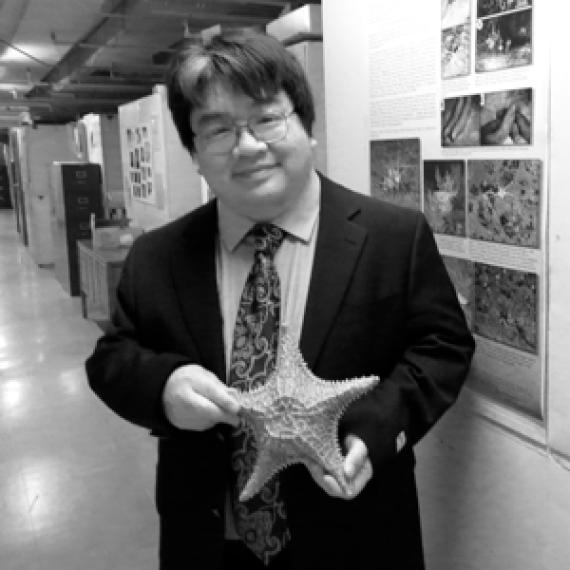 Dr Chris Mah
Dr Chris MahDr Chris Mah is one of the world's experts the evolution and biology of the Asteroidea which is commonly known as the seastar. His research has taken him around the globe, including Antarctica as well as the Aleutian Islands where he participated in numerous deep-sea cruises. His research includes deep-sea submersible dives in the Hawaiian Islands, off the Bahamas, and the Gorda Ridge in the North Pacific Ocean.
More Episodes
A compelling discussion shedding light on the distinctive narratives of those openly embracing their HIV-positive status and what this has meant historically and in today's world.
Meet Professor Kliti Grice, the West Australian Scientist of the Year 2022, as she embarks on a quest to decipher the Earth's past mysteries.
Join a panel of featured young LGBTQIA+ writers and storytellers as they delve into the fantastical realms and real-world struggles of the exciting new anthology, An Unexpected Party.
Explore Australia's dinosaur legacy with Dr Stephen Poropat as we better understand the science behind the scenes of Australian palaeontology!
As we inevitably move towards cleaner, more sustainable forms of energy, how will a shift away from traditional mining practices transform this economy? A panel of experts explore the implications of this shift with a specific focus on how we see ourselves in a world that increasingly demands environmental responsibility.
Join Megan Krakouer, a prominent Aboriginal leader, as she discusses the nuances of her surprising change of heart on the Voice to Parliament — just a week before the referendum.
Join host Michael Mills in a captivating live recording of the Palaeo Jam podcast during National Science Week!
As AI rapidly evolves, join our panel of experts in an exploration of these complex issues, including how we can harness its power while ensuring responsible and ethical use before we're outrun by its speed.
Do you know how and why your teeth do what they do? Find out all there is to know about teeth sharpening.
Decoding the language of our written and oral histories in Australia.
Join us for an insightful talk with the esteemed Professor Henry Skerritt, as he takes us on a journey exploring the captivating art of Jdewat/Ballandong artist Meeyakba Shane Pickett.
No, it’s not a card game but a community initiative helping us further our knowledge of a group of endemic land snails Bothriembryon affectionately called ‘Boths’.
Delve into the way Aboriginal industry professionals are shifting representations, decolonising the media space and creating visibility for Aboriginal people in the industry.
Exploring the debate surrounding the establishment of an independent, representative advisory body for First Nations people.
Aristeidis Voulgaris sharesstories from his eclipse chasing travels and discover the complex instruments and tools used in solar astronomy.
Join a panel of experts and community as they investigate the nature of queer bodies, and queer sexuality, in public space.
Join historian Toner Stevenson and astronomer Melissa Hulbert, as they share their tips on how to salute the sun during this eclipse!
Simon Miraudo and Tristan Fidler from RTRFM’s ‘Movie Squad’ are joined by Chelsey O'Brien, Curator at ACMI, as they review and discuss Alice’s Adventures in Wonderland as a foundation for contemporary storytelling in film.
In this one-off Perth Design Week talk, the Museum celebrates the remarkable women in architecture and film in a panel discussion, recorded as a part of its recent award-winning film screening.
